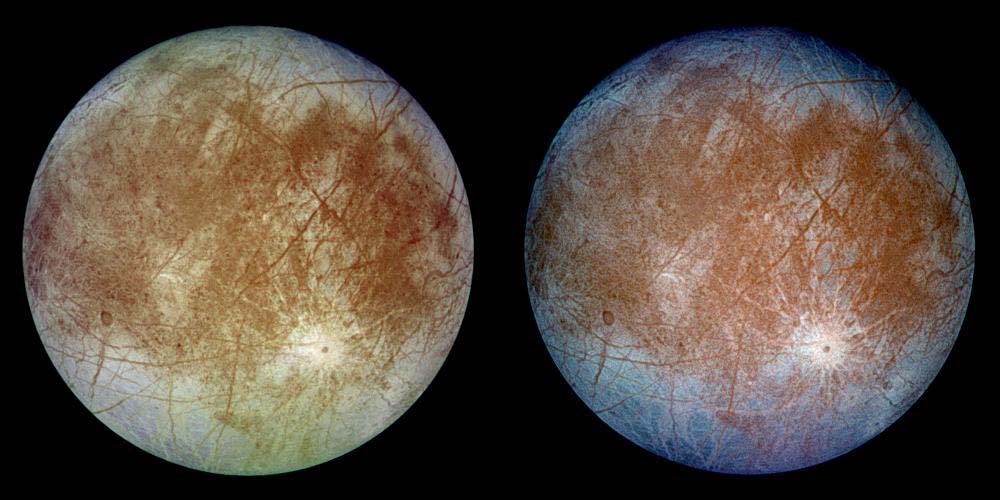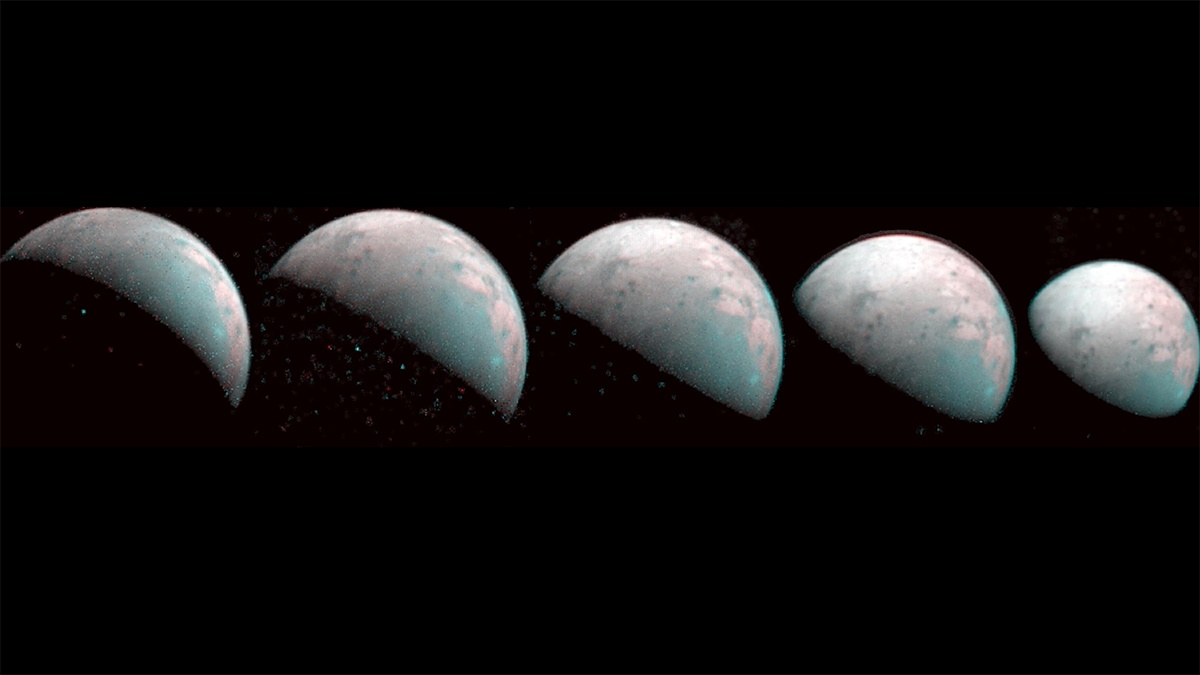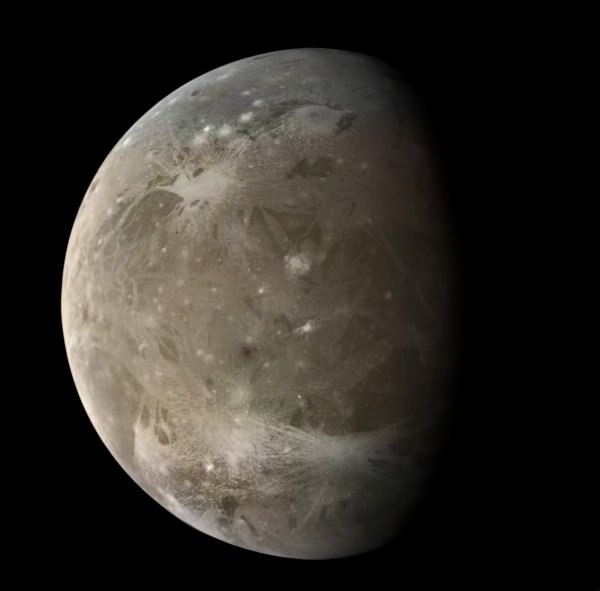Are we alone? Is there life beyond Earth? These are the questions that plague the very essence of science, and in particular, planetary science. Unfortunately, robotic exploration of exoplanetary systems currently remains out of reach due to the literal astronomical distances to get there. For context, our nearest star, Proxima Centauri, is 4.25 light years away, or a mind-blowing 40,208,000,000,000 km (25,000,000,000,000 miles) from Earth. Finding an intelligent civilization might be out of reach for now but searching for any forms of life beyond Earth is very much possible within the confines of our own solar system.
Continue reading “What’s the Right Depth to Search for Life on Icy Worlds?”With Webb Safely Launched, Focus Shifts to the Ariane 6

Last month, an Ariane 5 rocket carried the James Webb Space Telescope (JWST) safely to space, the latest of 112 total launches for the European Space Agency’s (ESA) primary workhorse rocket. With a 95.5% success rate, the Ariane 5 has been a reliable ride to space for decades, but its story is about to come to an end. ESA is no longer building new Ariane 5 vehicles, instead developing its next-generation rocket, the Ariane 6, which is intended to provide cheaper access to space. This week, the first completed core stage of a new Ariane 6 rocket arrived at the spaceport outside Korou in French Guiana for testing.
Continue reading “With Webb Safely Launched, Focus Shifts to the Ariane 6”Europa has Water in its Atmosphere
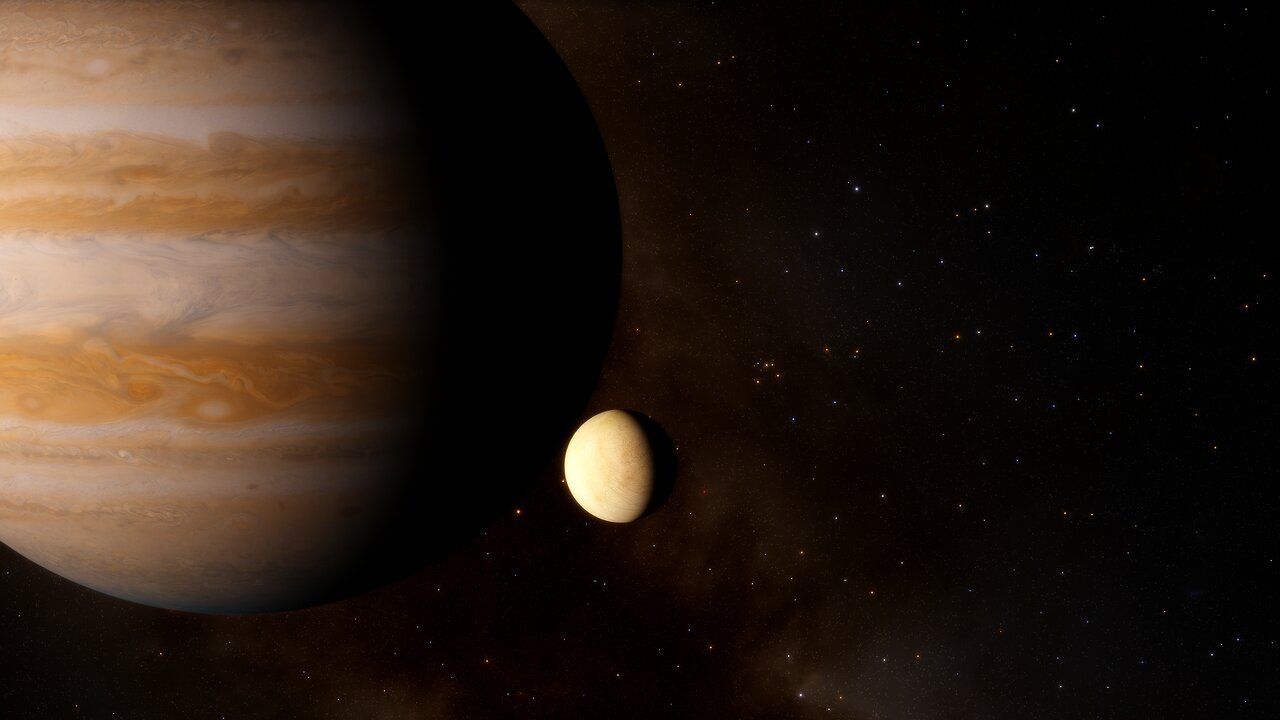
Since the Voyager probes passed through the Jupiter system in 1979, scientists have been intrigued and mystified by its moon Europa. Once the images these probes acquired of the moon’s icy surface returned to Earth, scientists began to speculate about the possibility of a subsurface ocean. Since then, the detection of plume activity and other lines of evidence have bolstered this theory and fed speculation that there could be life beneath Europa’s icy surface.
According to new research, another critical piece of evidence of Europa’s watery nature has at least been confirmed. Using a similar technique that confirmed the presence of atmospheric water vapor in Jupiter’s moon Ganymede, Lorenz Roth of the KTH Royal Institute of Technology confirmed that Europa has water vapor in its atmosphere. This discovery could lead to a greater understanding of Europa’s atmosphere and surface environment, informing missions headed there in the near future.
Continue reading “Europa has Water in its Atmosphere”Micrometeorites Churn up the Surface of Europa. If you Want to Find Life, You’ll Need to dig Down a Meter or So
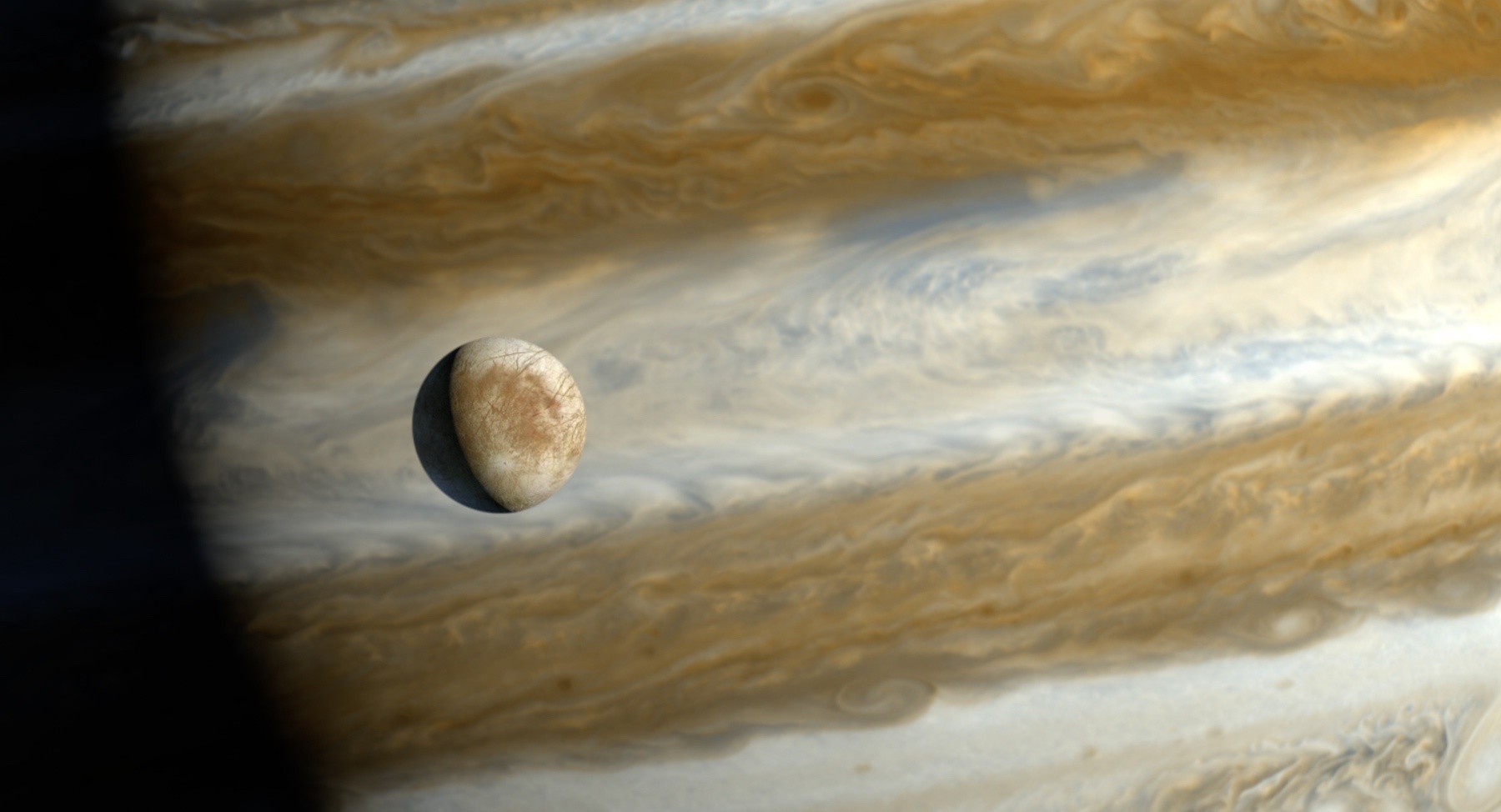
In the coming decade, NASA and the ESA will be sending two dedicated missions that will explore Jupiter’s moon Europa. These missions are known as the Europa Clipper and the JUpiter ICy moons Explorer (JUICE) missions, which will fulfill a dream that has been decades in the making – searching for possible evidence of life inside Europa. Since the 1970s, astronomers have theorized that this satellite contains a warm-water ocean that could support life.
The case for life in Europa has only been bolstered thanks to multiple flybys and observation campaigns that have been mounted since. According to new research led by the University of Hawaii at Manoa, the best way to look for potential signs of life (aka. biosignatures) would be to analyze small impact craters on Europa’s surface. These patches of exposed subsurface ice could point the way towards life that might exist deeper in the moon’s interior.
Continue reading “Micrometeorites Churn up the Surface of Europa. If you Want to Find Life, You’ll Need to dig Down a Meter or So”Juno Captures Pictures of Ganymede for the First Time
On July 5, 2016, NASA’s Juno spacecraft arrived around Jupiter, becoming the second mission in history to study the gas giant from orbit – the last being the Galileo spacecraft, which orbited Jupiter from 1995 to 2003. Since then, the spacecraft has gathered data on Jupiter’s atmosphere, composition, gravity field, and magnetic field in the hopes of learning more about how the planet formed and evolved.
In addition, the spacecraft has gathered some of the most breathtaking images ever taken of Jupiter and its system of moons. In fact, as the spacecraft was making another approach towards Jupiter on December 26th, 2019, it managed to capture the first infrared images of the moon Ganymede’s northern polar region. These images will inform future missions to this satellite, which could host life beneath its icy mantle.
Continue reading “Juno Captures Pictures of Ganymede for the First Time”Europe’s Mission to Jupiter’s Moons Just Got its First Instrument
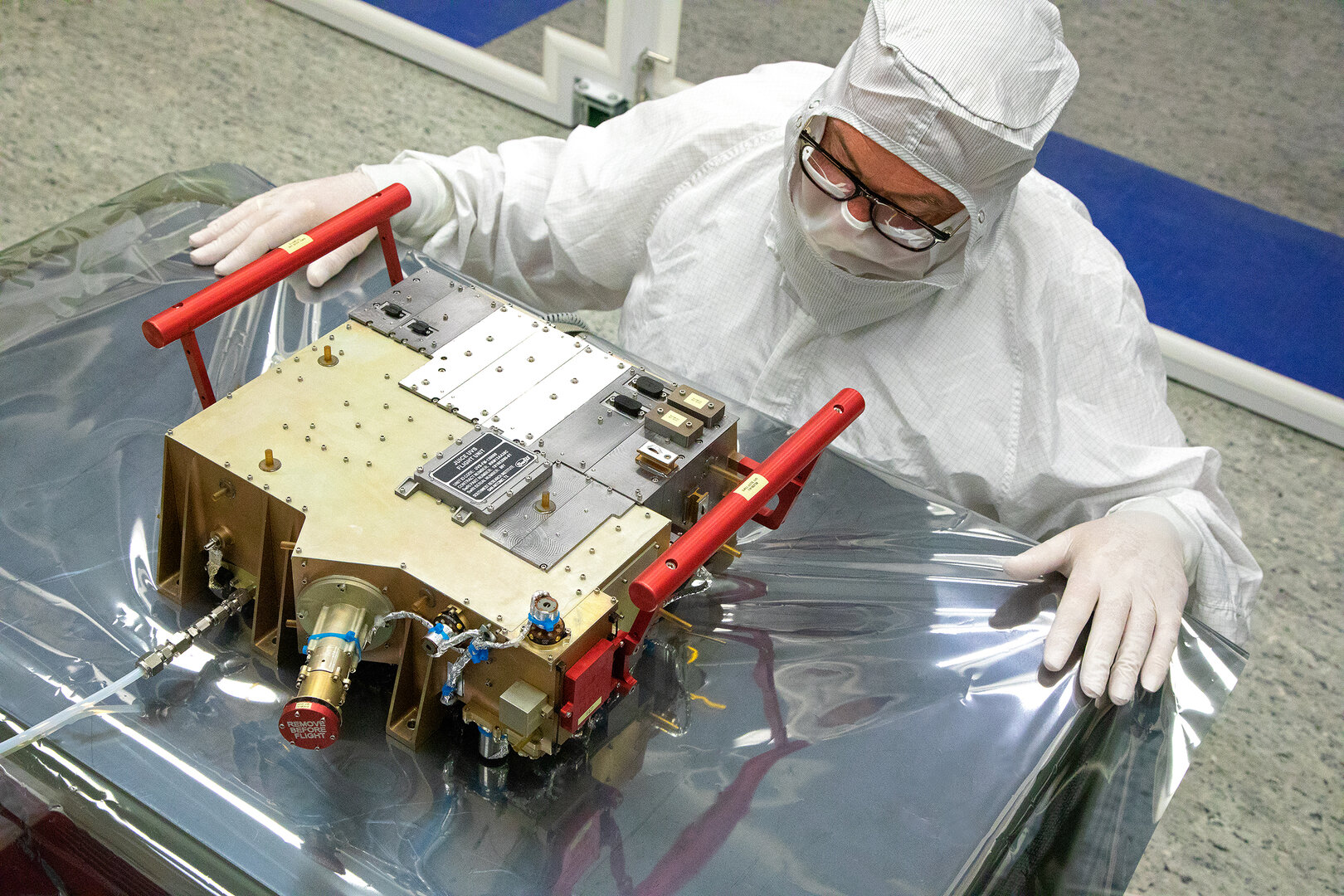
The space agencies of the world have some truly ambitious plans in mind for the coming decade. Alongside missions that will search for evidence for past (and maybe present) life on Mars, next-generation space telescopes, and the “return to the Moon”, there are missions will which will explore Jupiter’s moons for signs of extra-terrestrial life. These include the ESA’s JUpiter Icy Moon Explorer (JUICE), which will launch in 2022.
As part of the agency’s Cosmic Vision 2015-2025 program, this spacecraft will conduct detailed observations of Jupiter and three of its large moons – Ganymede, Callisto, and Europa – to see if they could indeed harbor life in their interiors. Late last month (Feb. 25th), the first instrument that will fly aboard JUICE and aid in these efforts was delivered and began the process of integration with the spacecraft.
Continue reading “Europe’s Mission to Jupiter’s Moons Just Got its First Instrument”Even Though it Hasn’t Launched Yet, JUICE Took its First Images of Jupiter and its Moons
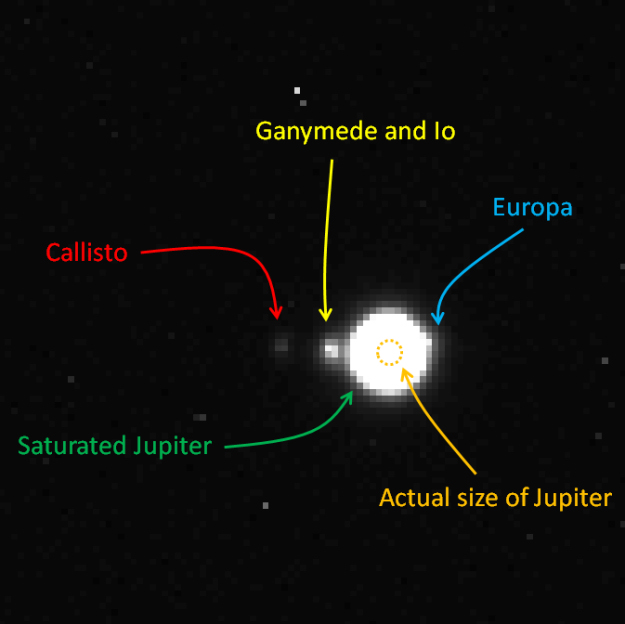
Is there a more complicated and sophisticated technological engineering project than a spacecraft? Maybe a particle accelerator or a fusion power project. But other than those two, the answer is probably no.
Spacecraft like the ESA’s JUICE don’t just pop out of the lab ready to go. Each spacecraft like JUICE is a singular design, and they require years—or even a decade or more—of work before they ever see a launch pad. With a scheduled launch date of 2022, JUICE is in the middle of all that work. Now its cameras are capturing images of Jupiter and its icy moons as part of its navigation calibration and fine-tuning.
“It felt particularly meaningful to conduct our tests already on our destination!”
Gregory Jonniaux, Vision-Based Navigation expert at Airbus Defence and Space.
Swirly Southern Picture Of Jupiter Makes Us Want To Visit Right Now
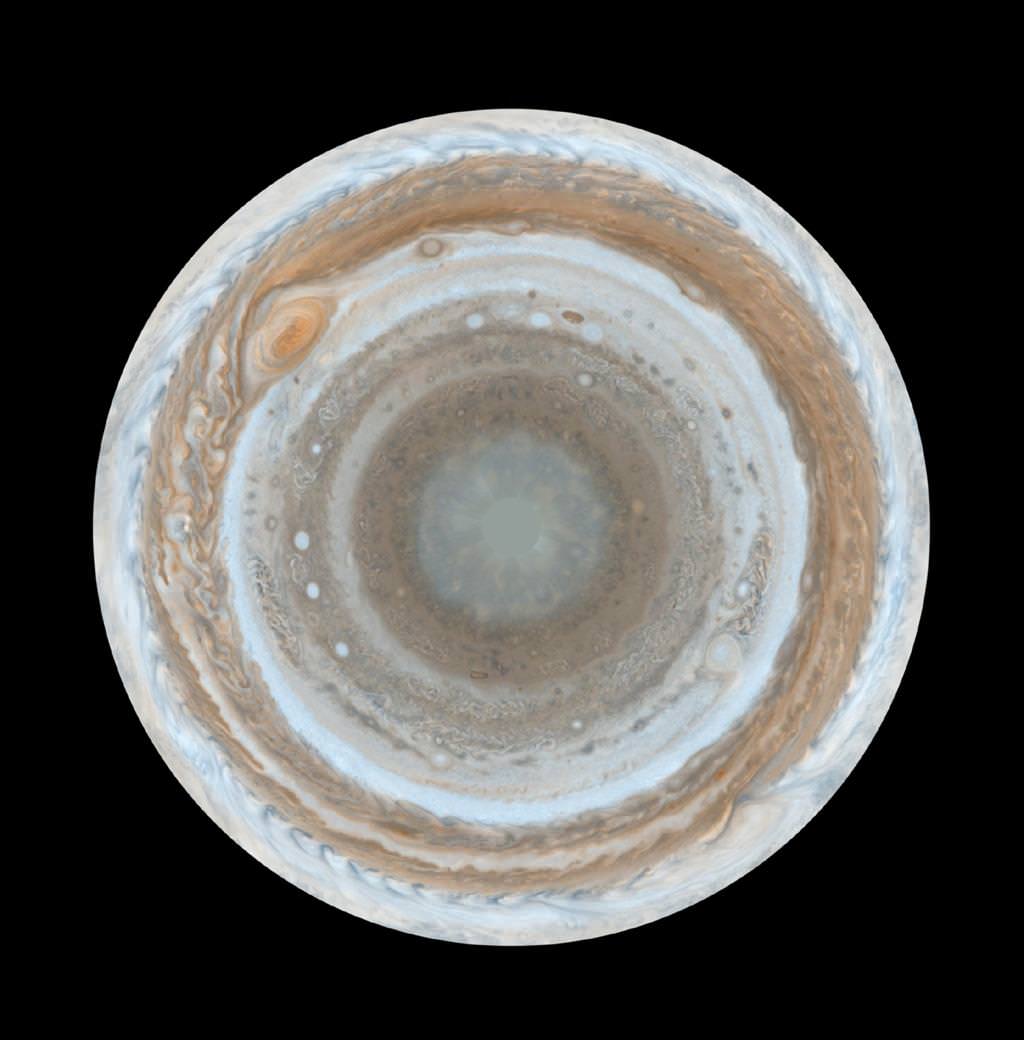
Gimme a rocketship – we want to see what those bands are made of! This is a strange view of Jupiter, a familiar gas giant that humanity has sent several spacecraft to. This particular view, taken in 2000 and highlighted on the European Space Agency website recently, shows the southern hemisphere of the mighty planet.
The underneath glimpse came from the Cassini spacecraft while it was en route to Saturn. Lucky for researchers, at the time the Galileo Jupiter spacecraft was still in operation. But now that machine is long gone, leaving us to pine for a mission to Jupiter until another spacecraft gets there in 2016.
That spacecraft is called Juno and is a NASA spacecraft the agency sent aloft in August 2011. And here’s the cool thing; once it gets there, Juno is supposed to give us some insights into how the Solar System formed by looking at this particular planet.
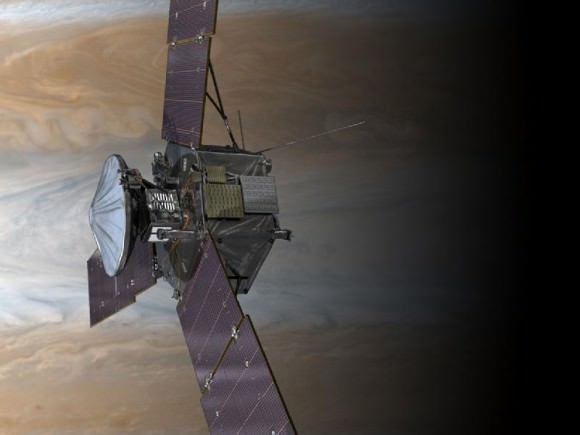
“Underneath its dense cloud cover, Jupiter safeguards secrets to the fundamental processes and conditions that governed our Solar System during its formation. As our primary example of a giant planet, Jupiter can also provide critical knowledge for understanding the planetary systems being discovered around other stars,” NASA wrote on the spacecraft’s web page.
The spacecraft is supposed to look at the amount of water in Jupiter’s atmosphere (an ingredient of planet formation), its magnetic and gravitational fields and also its magnetic environment — including auroras.
Much further in the future (if the spacecraft development is approved all the way) will be a European mission called JUICE, for Jupiter Icy Moon Explorer.
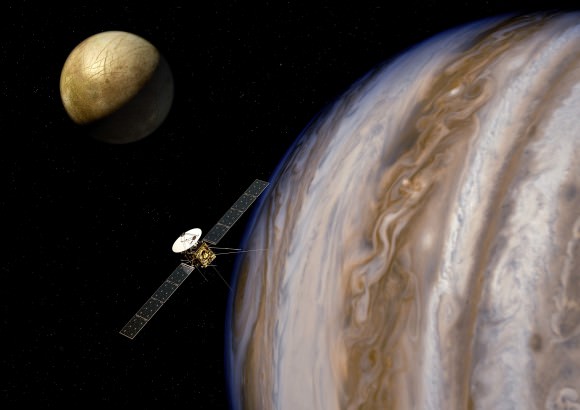
The mission will check out the planet and three huge moons, Ganymede, Callisto and Europa, to get a better look at those surfaces. It is strongly believed that these moons could have global oceans that may be suitable for life.
Earlier this month, the European Space Agency approved the implementation phase for JUICE, which means that designers now have approval to come up with plans for the spacecraft. But it’s not going to launch until 2022 and get to Jupiter until 2030, if the schedule holds.
Meanwhile, observations of Jupiter do continue from the ground. One huge finding this year came from the Hubble Space Telescope, which confirmed observations that the Great Red Spot is shrinking for reasons that are yet unknown.
Historic Comet Smashup Brought Water to Jupiter’s Stratosphere
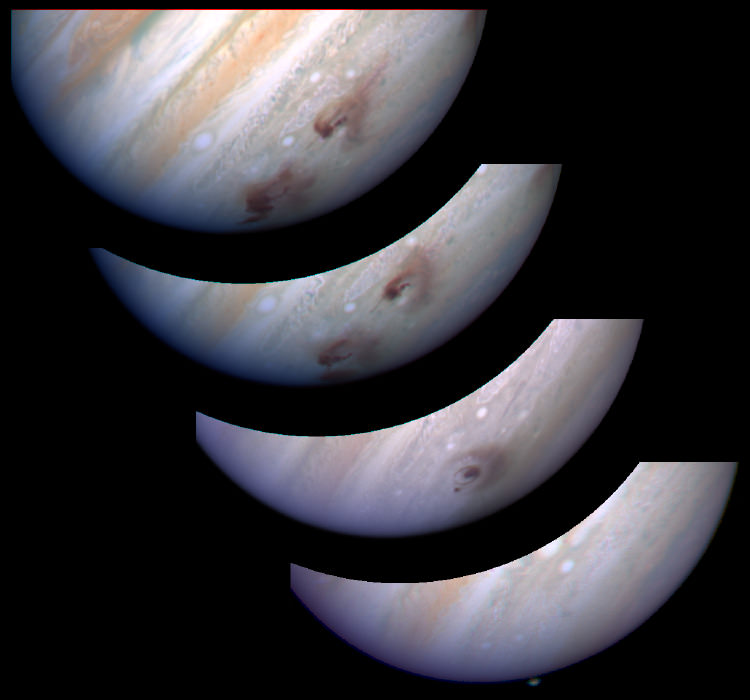
A large comet that peppered Jupiter two decades ago brought water into the giant planet’s atmosphere, according to new research from the Herschel space observatory.
Shoemaker-Levy 9 astounded astronomers worldwide when its 21 fragments hit Jupiter in June 1994. The event was predicted and observatories were trained on Jupiter as the impact occurred. The dark splotches the comet left behind were even visible in small telescopes. But apparently, those weren’t the only effects of the collision.
Herschel’s infrared camera revealed there is two to three times more water in the southern hemisphere of the planet, where the comet slammed into the atmosphere, than in the northern hemisphere. Further, the water is concentrated in high altitudes, around the various sites where Shoemaker-Levy 9 left its mark.
It is possible, researchers acknowledged, that water could have come from interplanetary dust striking Jupiter, almost like a “steady rain.” If this were the case, however, scientists expect the water would be evenly distributed and also would have filtered to lower altitudes. Jupiter’s icy moons were also in the wrong locations, researchers said, to have sent water towards the massive planet.
Internal water rising up was ruled out because it cannot penetrate the “cold trap” between Jupiter’s stratosphere and cloud deck, the researchers added.
“According to our models, as much as 95 percent of the water in the stratosphere is due to the comet impact,” said Thibault Cavalié of the Astrophysical Laboratory of Bordeaux, in France, who led the research.

While researchers have suspected for years that Jupiter’s water came from the comet — ESA’s Infrared Space Observatory saw the water there years ago — these new observations provide more direct evidence of Shoemaker-Levy 9’s effect. The results were published in Astronomy and Astrophysics.
Herschel’s find provides more fodder for two missions that are scheduled for Jupiter observations in the coming few years. The first goal for NASA’s Juno spacecraft, which is en route and will arrive in 2016, is to figure out how much water is in Jupiter’s atmosphere.
Additionally, ESA’s Jupiter Icy moons Explorer (JUICE) mission is expected to launch in 2022. “It will map the distribution of Jupiter’s atmospheric ingredients in even greater detail,” ESA stated.
While ESA did not link the finding to how water came to be on Earth, some researchers believe that it was comets that delivered the liquid on to our planet early in Earth’s history. Others, however, say that it was outgassing from volcanic rocks that added water to the surface.
Conventional theory dictates ice was in our solar system from when it was formed, and today we know that many planets have water in some form. Last year, for example, water ice and organics were spotted at Mercury’s north pole.
Mars appeared to be full of water in the ancient past, as evidenced by a huge, underground trench recently discovered by scientists. There is frozen water at the Martian poles, and both the Curiosity and Spirit/Opportunity rover missions have found evidence of flowing water on the surface in the past.
The outer solar system also has its share of water, including in all four giant planets (Jupiter, Saturn, Uranus and Neptune) and (in ice form) on various moons. Even some exoplanets have water vapor in their atmospheres.
“All four giant planets in the outer solar system have water in their atmospheres, but there may be four different scenarios for how they got it,” added Cavalié. “For Jupiter, it is clear that Shoemaker-Levy 9 is by far the dominant source, even if other external sources may contribute also.”
Source: European Space Agency
ESA Turns On The JUICE For New Jupiter Mission
[/caption]
The European Space Agency has given the go-ahead for an exciting mission to explore the icy moons of Jupiter, as well as the giant planet itself.
JUICE — JUpiter ICy moons Explorer — will consist of a solar-powered spacecraft that will spend 3.5 years within the Jovian system, investigating Ganymede, Europa and the upper atmosphere of Jupiter. Anticipated to launch in June 2022, JUICE would arrive at Jupiter in early 2030.
As its name implies, JUICE’s main targets are Jupiter’s largest icy moons — Ganymede and Europa — which are thought to have liquid oceans concealed beneath their frozen surfaces.
The largest moon in the Solar System, Ganymede is also thought to have a molten iron core generating a magnetic field much like Earth’s. The internal heat from this core may help keep Ganymede’s underground ocean liquid, but the dynamics of how it all works are not quite understood.
JUICE will also study the ice-coated Europa, whose cueball-smooth surface lined with cracks and jumbled mounds of frozen material seem to be sure indicators of a subsurface ocean, although how deep and how extensive is might be are still unknown — not to mention its composition and whether or not it could be hospitable to life.
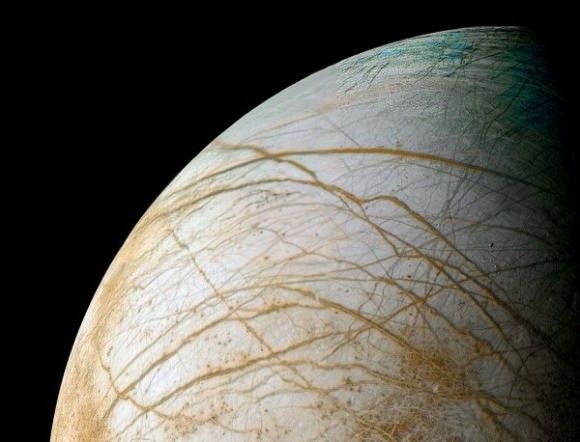
“JUICE will give us better insight into how gas giants and their orbiting worlds form, and their potential for hosting life,” said Professor Alvaro Giménez Cañete, ESA’s Director of Science and Robotic Exploration.
The JUICE spacecraft was originally supposed to join a NASA mission dedicated to the investigation of Europa, but NASA deemed their proposed mission too costly and it was cancelled. According to Robert Pappalardo, study scientist for the Europa mission based at JPL, NASA may still supply some instruments for the spacecraft “assuming that the funding situation in the United States can bear it.”
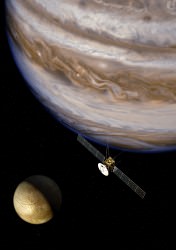
JUICE will also capture images of Jupiter’s moon Callisto and search for aurorae in the gas giant’s upper atmosphere, as well as measure the planet’s powerful magnetic field. Once arriving in 2030, it will spend at least three years exploring the Jovian worlds.
Read more in today’s news release from Nature, and stay tuned to ESA’s JUICE mission page here.
Recalibrated Galileo images © Ted Stryk. See more of Ted’s excellent work on his site Planetary Images From Then And Now.

